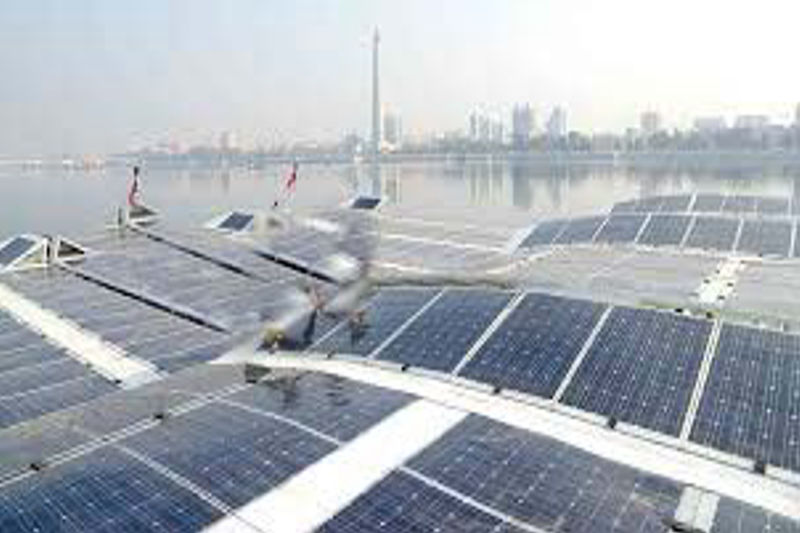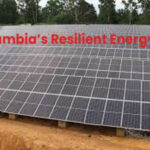Introduction
One of the most isolated countries in the world, North Korea, is dealing with a serious energy issue.Decades of economic sanctions, outdated infrastructure, and reliance on fossil fuels and hydropower have caused the nation to struggle with ongoing power outages. Yet, amid these challenges lies an opportunity—a shift toward renewable energy could transform North Korea’s energy landscape, ensuring long-term resilience and sustainability.
By diversifying its energy mix with solar, wind, and other renewables, North Korea could reduce its dependence on unreliable imports, mitigate the effects of climate change, and provide stable electricity for its people. This article explores why renewable energy is not just an alternative but a necessity for North Korea’s future.
The Current Energy Crisis in North Korea
North Korea’s energy sector is plagued by inefficiency and scarcity. The country relies heavily on:
Coal: Accounts for over 70% of electricity generation but is environmentally damaging and inefficient.
Hydropower: Makes up much of the remaining supply but is vulnerable to droughts and seasonal variations.
Limited Oil Imports: Sanctions restrict fuel imports, leading to frequent blackouts.
The result? Widespread energy poverty. Outside Pyongyang, rural areas often go without power for days, hindering economic activity and quality of life. Inconsistent electricity supply hampers the growth of businesses, schools, and hospitals.
1. Solar Power: A Reliable and Abundant Resource
North Korea receives substantial sunlight, particularly in its western and southern regions. Solar energy presents a decentralized solution that can bypass the need for large-scale grid improvements.
Small-scale solar panels are already appearing in rural homes and farms, proving their viability.
Government-backed solar projects, such as those in Pyongyang, show a growing (though limited) interest in photovoltaics.
Off-grid solar systems could provide immediate relief to energy-starved regions without massive infrastructure investments.
2. Wind Energy: Untapped Potential
There are numerous prospects for wind energy generation in North Korea’s coastal and mountainous regions, particularly in:
The East Coast (Sea of Japan): High wind speeds suitable for turbines.
Northern Highlands: Consistent winds that could support wind farms.
Despite its current lack of development, wind energy has the potential to become a significant component of a diverse energy mix with the right investments.
3. Biomass and Waste-to-Energy: Turning Scarcity into Opportunity
Because of its restricted access to fossil fuels, North Korea has experimented with biogas and agricultural waste energy.
Biogas can be produced from animal dung and farm waste for heating and cooking.
Forest biomass (though risky if mismanaged) could supplement energy needs sustainably.
4. Hydropower Expansion (with Caution)
While existing dams are vulnerable to droughts, small-scale hydro projects could provide localized power without the risks of large dams.
Benefits of a Renewable Energy Shift
1. Energy Independence
Reducing reliance on imported coal and oil would make North Korea less vulnerable to sanctions and global market fluctuations.
2. Climate Resilience
Renewables are less susceptible to extreme weather than coal plants and large dams, ensuring more stable energy output.
3. Economic Opportunities
Jobs could be created by local production of wind turbines and solar panels.
Energy exports (if sanctions ease) could become a future revenue stream.
4. Improved Living Standards
Stable electricity means better healthcare, education, and economic activity—key for long-term development.
Challenges and the Path Forward
Obstacles to Renewable Adoption
Limited Technology & Expertise: North Korea lacks advanced renewable energy infrastructure.
Sanctions & Isolation: Restrictions hinder access to foreign investment and technology.
Centralized Energy Control:The state’s tight grip on energy distribution may slow decentralized renewable adoption.
How North Korea Can Overcome These Barriers
1. Prioritize Small-Scale Solar & Wind Projects– Fast-tracking off-grid solutions can provide immediate benefits.
2. Seek Foreign Partnerships (Where Possible) – Limited cooperation with China or NGOs could bring in renewable tech.
3. Invest in Domestic Research & Training– Building local expertise will be crucial for long-term sustainability.
4. Pilot Projects in Key Regions– Testing renewables in select areas before nationwide rollout.
Conclusion: A Renewable Future Is Possible
North Korea’s energy crisis will not be solved by clinging to outdated coal and hydropower systems. Diversification into renewable sources is the only practical way forward.Solar, wind, and biomass can provide reliable, decentralized, and sustainable energy—breaking the cycle of shortages and dependency.
While challenges exist, the potential rewards—energy security, economic growth, and improved living conditions—are too significant to ignore. For a nation accustomed to resilience, renewables offer the best chance for a brighter, more stable future.
The time to act is now. If North Korea embraces renewable energy, it could transform its energy sector from a weakness into a strength—powering not just homes and industries, but also the possibility of a more sustainable and self-sufficient future.


